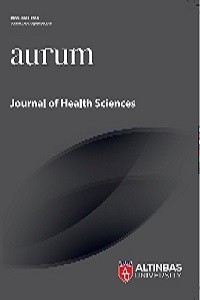Letter to Editor on CRISPR-Cas9 genome editing and Nobel Prize
Letter to Editor on CRISPR-Cas9 genome editing and Nobel Prize
CRISPR-Cas9, genome editing Nobel Prize,
___
- Ernst, M. P., Broeders, M., Herrero-Hernandez, P., Oussoren, E., van der Ploeg, A. T., & Pijnappel, W. P. (2020). Ready for repair? Gene editing enters the clinic for the treatment of human disease. Molecular Therapy-Methods & Clinical Development. https://doi.org/10.1016/j.omtm.2020.06.022.
- Frangoul, H., Altshuler, D., Cappellini, M. D., Chen, Y. S., Domm, J., Eustace, B. K., ... & Ho, T. W. (2020). CRISPR-Cas9 gene editing for sickle cell disease and β-thalassemia. New England Journal of Medicine. https://doi.org/10.1056/NEJMoa2031054.
- Ledford, H., & Callaway, E. (2020). Pioneers of revolutionary CRISPR gene editing win chemistry Nobel. Nature, 586(7829), 346-347. https://doi.org/10.1038/d41586-020-02765-9.
- ISSN: 2651-2815
- Yayın Aralığı: Yılda 3 Sayı
- Başlangıç: 2018
- Yayıncı: Altınbaş Üniversitesi
Letter to Editor on CRISPR-Cas9 genome editing and Nobel Prize
Ecem YILDIZ, Nilay AKSOY, Rashida UMAR
A New Approach in Epilepsy Treatment: Nanocarrier Systems
Burçak YAVUZ, Özlem YILDIRIM, Ahsen Gulizar YILMAZ
Industry 4.0 Elements for Pharmaceutical Development and Manufacture
The Burden of Care and Coping Strategies of Caregivers of Elderly Patients
